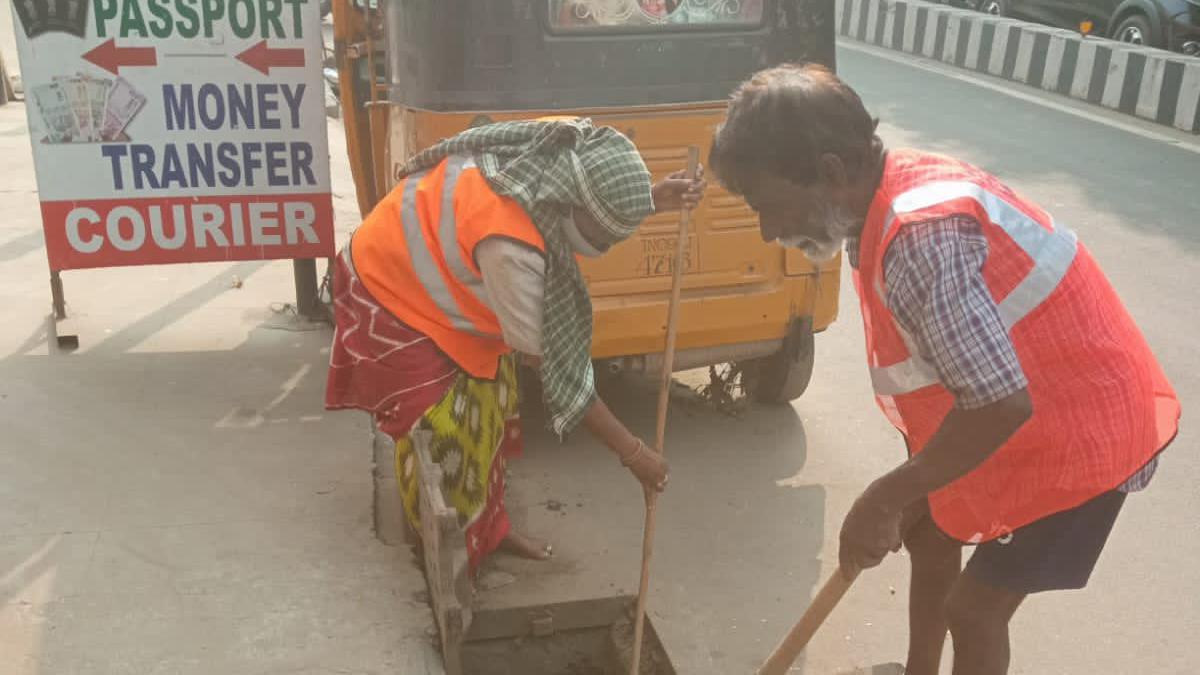
Silt catch pits and storm-water drains across Chennai will be cleaned frequently, says Greater Chennai Corporation
The Hindu
GCC to desilt & clean silt catch pits & storm-water drains more frequently post Cyclone Michaung. Identified 23,093 silt catch pits in 1,468 arterial roads. Desilting process made more frequent. Manholes opened without authorisation to drain stagnant water. 60 million cubic feet (mcft) inundated areas cleared within 48 hours. Sewage illegally let out into inundated areas.
The Greater Chennai Corporation (GCC) said it would desilt and clean silt catch pits and storm-water drains frequently following the impact of Cyclone Michaung.
The Greater Chennai Corporation recently took up desilting of the silt catch pits across the city, to remove deposits and garbage accumulated due to flooding during Cyclone Michaung. In 2022, the civic body had identified 23,093 silt catch pits in 1,468 arterial roads across the 200 wards. Work is under way on Walajah Road, North Usman Road, 10th Main Road in Lenin Nagar, D. Lakshmanaswami Salai, and Govindhan Street.
According to GCC Commissioner J. Radhakrishnan: “We learnt that silt had accumulated in the catch pits every hour on Bazullah Road and Vijayaraghavachari Road, close to the Mambalam Canal, during heavy rain. Moreover, we found discarded clothes clogging up the pits while cleaning. So, work began to remove these. Earlier, it was deemed sufficient to desilt them once a year, but now the desilting process will be made more frequent.”
He added that the Corporation is also looking into areas were manholes were opened without authorisation to drain the stagnant water.
Mentioning that the city became a reservoir for 60 million cubic feet (mcft) as the four outlets – Adyar, Cooum, and Kosasthalaiyar rivers and Buckingham Canal – did not receive water from the installed storm-water drains, he stated, “Roughly 60% of inundation was cleared within 48 hours. Further, despite clear directions, many have let out sewage into inundated areas illegally,” he added.

Unfurling the zine handed to us at the start of the walk, we use brightly-coloured markers to draw squiggly cables across the page, starting from a sepia-toned vintage photograph of the telegraph office. Iz, who goes by the pronouns they/them, explains, “This building is still standing, though it shut down in 2013,” they say, pointing out that telegraphy, which started in Bengaluru in 1854, was an instrument of colonial power and control. “The British colonised lands via telegraph cables, something known as the All Red Line.”

The festival in Bengaluru is happening at various locations, including ATREE in Jakkur, Bangalore Creative Circus in Yeshwantpur, Courtyard Koota in Kengeri, and Medai the Stage in Koramangala. The festival will also take place in various cities across Karnataka including Tumakuru, Ramanagara, Mandya, Kolar, Chikkaballapura, Hassan, Chitradurga, Davangere, Chamarajanagar and Mysuru.









